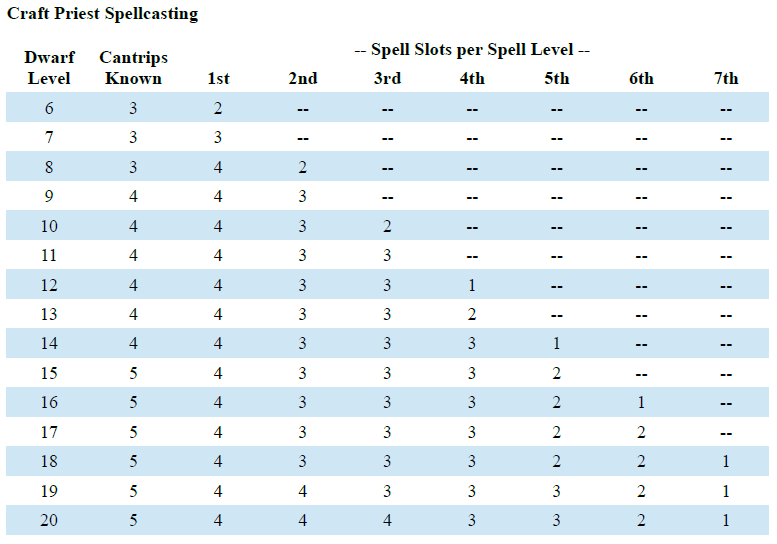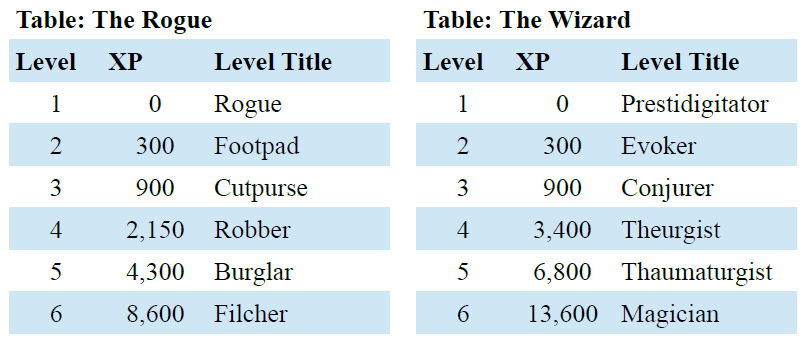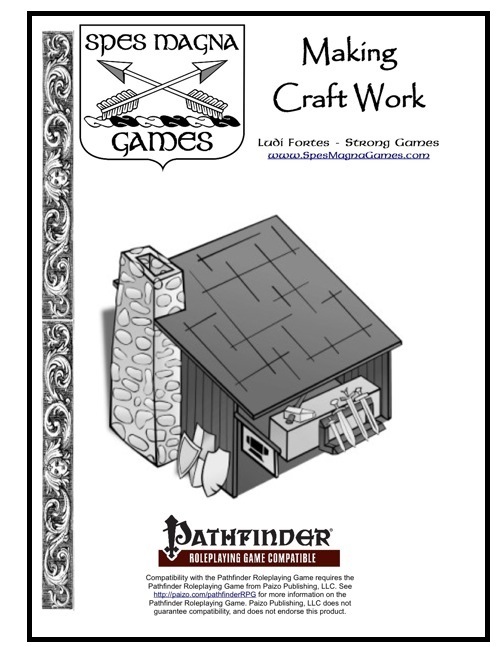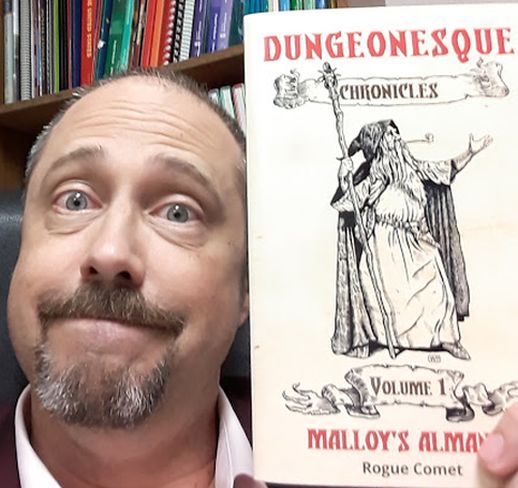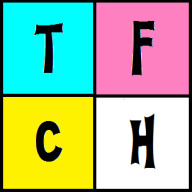Dwarf as Class for 5E
Way back when, in the Golden Age of the World’s Greatest Roleplaying Game, a dwarf was not just a race option for players. Dwarf was also a character class. It was a race-as-class. Someone else has undoubtedly already done this, but here’s my version of the Dwarf character class for 5E.
Dwarf Class Features
As a dwarf, you gain the following class features.

Hit Points
Hit Dice: d10 per dwarf level
Hit Points at 1st Level: 10 + your Constitution modifier
Hit Points at Higher Levels: 1d10 (or 6) + your Constitution modifier per dwarf level after 1st
Proficiencies
Armor: Light armor, medium armor, shields
Weapons: Simple weapons, battleaxe, handaxe, light hammer, and warhammer
Tools: Choose one artisan’s tools from smith’s tools, brewer’s supplies, or mason’s tools
Saving Throws: Strength, Constitution
Skills: Choose two skills from Animal Handling, Athletics, History, Insight, Intimidation, Perception, or Survival.
Equipment
You start with the following equipment, in addition to the equipment granted by your background:
* (a) chain shirt or (b) studded leather armor, light crossbow, and 20 crossbow bolts
* (a) battle axe, handaxe, light hammer, or warhammer and a shield or (b) one simple melee weapon and one artisan’s tools
* (a) a dungeoneer’s pack or (b) an explorer’s pack
Dwarven Nature
You have an assortment of inborn abilities.
Ability Score Increase
Your Constitution score increases by 2.
Age
Dwarves mature at the same rate as humans, but they’re considered young until they reach the age of 50. On average, they live about 350 years.
Alignment
Most dwarves are lawful, believing firmly in the benefits of a well-ordered society. They tend toward good as well, with a strong sense of fair play and a belief that everyone deserves to share in the benefits of a just order.
Size
Dwarves stand between 4 and 5 feet tall and average about 150 pounds. Your size is Medium.
Speed
Your base walking speed is 25 feet. Your speed is not reduced by wearing heavy armor.
Darkvision
Accustomed to life underground, you have superior vision in dark and dim conditions. You can see in dim light within 60 feet of you as if it were bright light, and in darkness as if it were dim light. You can’t discern color in darkness, only shades of gray.
Dwarven Resilience
You have advantage on saving throws against poison, and you have resistance against poison damage. At 9th level, you can reroll a saving throw you fail against magic. You must use the new roll, and you can’t use this feature again until you finish a long rest.
You can use this latter feature twice between long rests at 13th level and three times between long rests starting at 17th level.
Stonecunning
Whenever you make an Intelligence (History) check related to the origin of stonework, you are considered proficient in the History skill, and add double your proficiency bonus to the check instead of your normal proficiency bonus.
Languages
You can speak, read, and write Common and Dwarvish. Dwarvish is full of hard consonants and guttural sounds, and those characteristics spill over into whatever other language a dwarf might speak.
Dwarven Variety
You belong to one of the several dwarven subraces. Choose a subrace. Hill dwarf and mountain dwarf are detailed in the Player’s Handbook. Other subraces are detailed below.
Deep Dwarf
Deep dwarves live far under the earth, seldom having contact with races who live in the light of day.
Ability Score Increase: Your Dexterity score increases by 1.
Improved Darkvision: You can see in dim light within 90 feet of you as it were bright light, and in darkness as if it were dim light. You can’t discern color in darkness, only shades of gray.
Gray Dwarf
Also called duergar, these dwarves also live deep beneath the earth, driven their eons ago for worshipping evil gods.
Ability Score Increase: Your Intelligence score increases by 1.
Gray Dwarf Magic: You can cast enlarge (but not reduce and invisibility on yourself only, doing so once each with this ability. You regain the ability to do so when you finish a long rest.
Gray Dwarf Stealth: You have advantage on Dexterity (Stealth) checks when you are alone or accompanied by no one other than gray dwarves.
Sunlight Sensivity: You have disadvantage on attack rolls and on Wisdom (Perception) checks that rely on sight when you, the target of your attack, or whatever you are trying to perceive is in direct sunlight.
Superior Darkvision: You can see in dim light within 120 feet of you as it were bright light, and in darkness as if it were dim light. You can’t discern color in darkness, only shades of gray.
Fighting Style
You adopt a particular fighting style as your specialty. Choose one of the following options. You can’t take a Fighting Style option more than once even if you later get to choose again.
Crossbow
You gain a +1 bonus to attack rolls you make with crossbows, and you ignore the loading properties of crossbows with which you are proficient.
Giant Fighter
When you are fighting a Large or larger creature, you gain a +1 bonus to AC and melee attack rolls.
Great Weapon Fighting
When you roll a 1 or 2 on a damage die for an attack you make with a melee weapon that you are wielding with two hands, you can reroll the die and must use the new roll, even if the new roll is a 1 or a 2. The weapon must have the two-handed or versatile property for you to gain this benefit.
Protection
When a creature you can see attacks a target other than you that is within 5 feet of you, you can use your reaction to impose disadvantage on the attack roll. You must be wielding a shield.
Ancient Foe
You have significant experience studying, tracking, hunting, and even talking to giants, goblins, half-orcs, hobgoblins, or orcs. Choose one of these creatures. You have advantage on Wisdom (Survival) checks to track them, as well as on Intelligence checks to recall information about them. You learn one language of your choice that is spoken by this ancient enemy. At 6th and 14th levels, you choose another ancient enemy from the list and learn its language as well.
Foe Slayer
Starting at 2nd level, you can push yourself beyond your normal limits for a moment when fighting your ancient foe. On your turn, you can take one additional action on top of your regular action and a possible bonus action.
Once you use this feature, you must finish a short or long rest before you can use it again. Starting at 17th level, you can use it twice before a rest, but only once on the same turn.
Dwarven Archetype
At 3rd level, you choose an archetype that you strive to emulate in your life as a dwarf. The archetype you choose grants you features at 3rd level and again at 6th, 10th, and 14th level.
Ability Score Improvement
When you reach 4th level, and again at 6th, 8th, 12th, 14th, 16th, and 19th level, you can increase one ability score of your choice by 2, or you can increase two ability scores of your choice by 1. As normal, you can’t increase an ability score above 20 using this feature.
Extra Attack
Beginning at 5th level, you can attack twice, instead of once, whenever you take the Attack action on your turn.
Dwarven Archetypes
Dwarves manifest their fuller dwarven natures in different ways. The dwarven archetype you choose reflects the way your dwarf shows his fuller dwarven nature.
Battlerager
Battleragers are the most feared of dwarven warriors. In battle, the characteristic dwarven demeanor of calm, cool action crumbles, and the battlerager foams at the mouth, he screams imprecations, and even his body changes, growing in size and strength and speed. In the deepest of battlerages, the dwarf taps into the boundless fury of the dwarven god of war himself.
Battlerage
At 3rd level, when in battle, you surrender to the rage that burns in your heart. On your turn, you enter battlerage as a bonus action. Your rage lasts for 1 minute. It ends early if you are knocked unconscious or if you neither attacked a hostile creature since your last turn or have taken damage since your last turn. You can also end your rage as a bonus action. While raging, you gain the following benefits:
* You have advantage on Dexterity checks and Dexterity saving throws.
* You gain temporary hit points equal to 1d10 + one-half your dwarf level.
* When you make a melee weapon attack using Strength, you add one-half your proficiency bonus to the damage roll. Against your ancient foes, you add your full proficiency bonus to the damage roll.
If you are able to cast spells, you can’t cast them or concentrate on them while battleraging. Once you have raged a number of times equal to your proficiency bonus, you must finish a long rest before you can rage again.
Unstoppable
Beginning at 6th level when you battlerage, you have advantage on saving throws against spells. You also have resistance to bludgeoning, piercing, and slashing damage.
War Frenzy
Beginning at 10th level when you battlerage, you can use a bonus action to tap deeper into your wellspring of rage. This counts as an additional use of your battlerage feature. Your muscles swell with unnatural power. Any of your ancient foes within 30 feet of you that see you must succeed on a Wisdom saving throw (DC equal to 8 + your proficieny bonus + your Charisma modifier) or be frightened until the end of your next turn. For the duration of your battlerage, your melee weapon attacks deal 1d4 extra damage, and you have advantage on Strength checks and Strength saving throws.
War God’s Fury
Beginning at 14th level when you battlerage, your rage becomes a channel for the divine rage of the dwarven war god. You have four superiority dice, which are d8s. A superiority die is expended when you use it. You regain all of your superiority dice when you finish a long rest. Choose three maneuvers from the following list, which you can use when you battlerage: Evasive Footwork, Goading Attack, Lunging Attack, Menacing Attack (Wisdom saving throw DC equals 8 + your proficiency bonus + your Strength modifier), Pushing Attack, or Sweeping Attack.
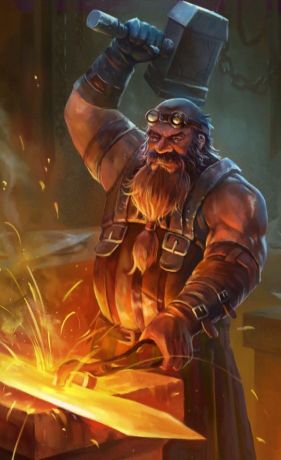
Craft Priest
Dwarves excel at crafting. They are master artisans, and perfecting their arts plays a vital role in dwarven society. Craft priests represent the highest expression of dwarven craftsmanship.
Practice, Practice, Practice
At 3rd level, you gain proficiency in any combination of three Intelligence, Wisdom, or Charisma skills or tools of your choice. If you choose the artisan tools that you chose as one of your starting proficiencies, you become a master in that craft. You roll with advantage with any ability checks you make using the tools of your mastercraft. For every day of downtime you spend crafting with any of your proficiencies, you can craft one or more times with a total market value not exceeding 10 gp (or 15 gp with a mastercraft). You must expend raw materials worth half the total market value (or one-third the total market value with a mastercraft). If you want to craft something that has a market value greater than 10 gp (15 gp with a mastercraft), you make progress every in day in 10- or 15-gp increments until you reach the item’s market value. While crafting, you can maintain a comfortable lifestyle without having to pay 2 gp per day, or a wealthy lifestyle at half normal cost.
Spellcasting
Starting with 6th level, you can cast a number of cleric spells.
Cantrips: You learn three cantrips of your choice from the cleric spell list. You learn additional cleric cantrips of your choice at higher levels, as shown in the Cantrips Column of the Craft Priest table.
Preparing and Casting Spells: You prepare and cast spells as a cleric. When you choose your cleric spells that are available to cast, choose a number of cleric spells equal to your Wisdom modifier + five less than your dwarf level.
Spellcasting Ability: Just like a cleric, Wisdom is your spellcasting ability. Your spell save DC equals 8 + your proficiency bonus + your Wisdom modifier. Your spell attack modifier equals your proficiency bonus + your Wisdom modifier.
Spellcasting Focus: You can use a holy symbol or artisan tools for which your are proficient as your spellcasting focus.
Magic Craftsmanship
Starting at 10th level, you can cast identify a number of times equal to your Wisdom modifier (a minimum of once). You regain all expended uses when you finish a long rest. At 12th level, you always have fabricate prepared as one of your 4th-level spells, and it doesn’t count against the number of spells you can prepare each day. At 14th level, you can always have creation prepared as one your 5th-level spells, and it doesn’t count against the number of spells you can prepare each day.
